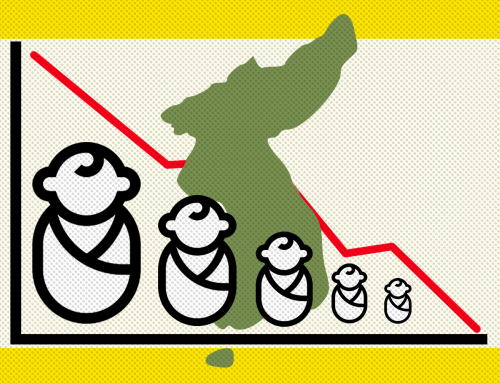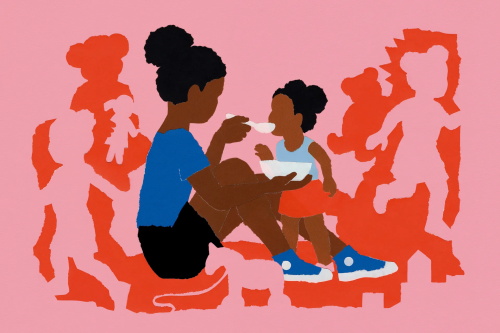Post-Pandemic Fertility Crisis: Why Gen Z Chooses Pets Over Kids

Over the past century, the world has witnessed remarkable advances in the economy, technology, and education. As living standards have risen, the widespread availability of modern contraceptive methods and the rising education levels among women have led to profound changes in reproductive behavior. While high fertility rates still prevail in some impoverished rural regions, in high-income countries, transitioning economies, and most urban areas of lower- and middle-income nations, birth rates have long dropped below replacement levels, ushering in an era of low fertility.
According to United Nations data, the global fertility rate plummeted from 5.0 in 1960 to 2.2 in 2024 and is projected to decline further to 2.1 by 2050, approaching the warning threshold. The situation in some countries is particularly severe—South Korea’s total fertility rate hit a historic low of 0.72 in 2023, almost the lowest ever recorded globally. Although it rose slightly in 2024, it only reached 0.75.
Singapore's fertility rate also dipped below 1.0 for the first time in 2023, reaching 0.97, and this figure remained unchanged in 2024. Meanwhile, China’s birth numbers fell below 9 million in 2023, nearly halving compared to pre-pandemic levels.
The fertility crisis is not confined to Asia. Even Nordic countries—long praised for generous welfare systems and strong family policies—are experiencing a fertility chill. In 2024, Finland's fertility rate fell to 1.25, while France’s dropped to 1.62. Despite numerous pro-birth initiatives across Europe, birth rates remain stagnant, and the decline in population growth shows no sign of reversing.
Worse still, this cliff-like drop in birth rates shows no rebound in sight. Even in countries like those in Scandinavia—where the government essentially covers all child-rearing expenses from birth through university—fertility rates remain stubbornly low. Once the rate falls past a certain point, recovery seems almost impossible.
This trend has complex causes, spanning economic, social, and cultural dimensions. One undeniable factor is the rising social status of women. In Japan, for instance, as women’s education levels and workforce participation have increased, more women have delayed or opted out of marriage and childbirth. As a result, the total fertility rate has declined from 2.13 in 1970 to 1.2 in 2023. In South Korea, the feminist movement has given rise to phenomena like the “4B” and even “8B” cultures—refusing dating, sex, marriage, and childbirth, and even rejecting makeup, plastic surgery, consumerism, and the male gaze—further contributing to the fertility drop.
At the same time, more members of Gen Z are choosing not to have children and instead are embracing pet ownership. In many ways, pets have become emotional stand-ins for children.
This shift is not merely about laziness or selfishness—it reflects deep structural changes in society. Post-pandemic life is filled with uncertainty: economic strain, health anxieties, soaring living costs, and increased job competition. For many young people, having children feels like a high-investment, high-risk life project with uncertain returns.
Raising a child requires at least two decades of sustained input and involves a multitude of responsibilities—education, healthcare, housing, and more. Especially in urban areas, the high cost of raising children deters many young adults. Pets, by contrast, offer emotional companionship at a much lower financial and logistical cost.
More importantly, modern lifestyles have changed dramatically. In the fast-paced, high-pressure world many young people inhabit, even self-care can feel overwhelming—let alone raising a child. Pets don’t need tutoring, school applications, or emotional support due to their owner’s long work hours or relocation. Their companionship is consistent, comforting, and unconditional.
When a dog greets you at the door after a long day, or a cat curls up quietly in your lap, the emotional connection is immediate and simple—much easier to access than the long, complicated emotional investment required to raise a child. Pets love without condition, without caring about grades, looks, or achievements. This kind of pure affection appeals to many young adults more than the stress and expectations that often come with parenting.
Additionally, a growing number of young people are choosing not to have children due to environmental concerns and anxiety about the future. Worries about climate change, dwindling resources, and global political and economic instability make some feel they can’t provide a secure future for a child. Some even see remaining childfree as a way to reduce their individual carbon footprint. This value system is becoming increasingly common among Gen Z.
Ultimately, it’s not that young people don’t value life or family—it’s that they feel they can’t afford to have kids, or are too uncertain about whether it’s worth it. The pet ownership boom isn’t a complete substitute for parenting, but it serves as an emotional outlet—a way to find warmth and connection in an unpredictable world.
Therefore, in the face of the fertility crisis, we shouldn’t just ask, “How can we encourage them to have children?” but instead reflect on “Why don’t they want to?” Do we have safe and supportive work environments? Are child-rearing resources distributed fairly? Can people realistically balance careers and parenting? Are non-traditional, non-parent lifestyles respected and supported? These are the real issues that will shape the future of society.
A future-ready society should aim to create an environment where people can, dare to, and want to have children—not one where they’re morally pressured or incentivized into it. Just as importantly, we must respect the choice not to have children—those who choose that path are also living meaningfully, caring for others, and finding happiness in their own way.
Recommended for you:







